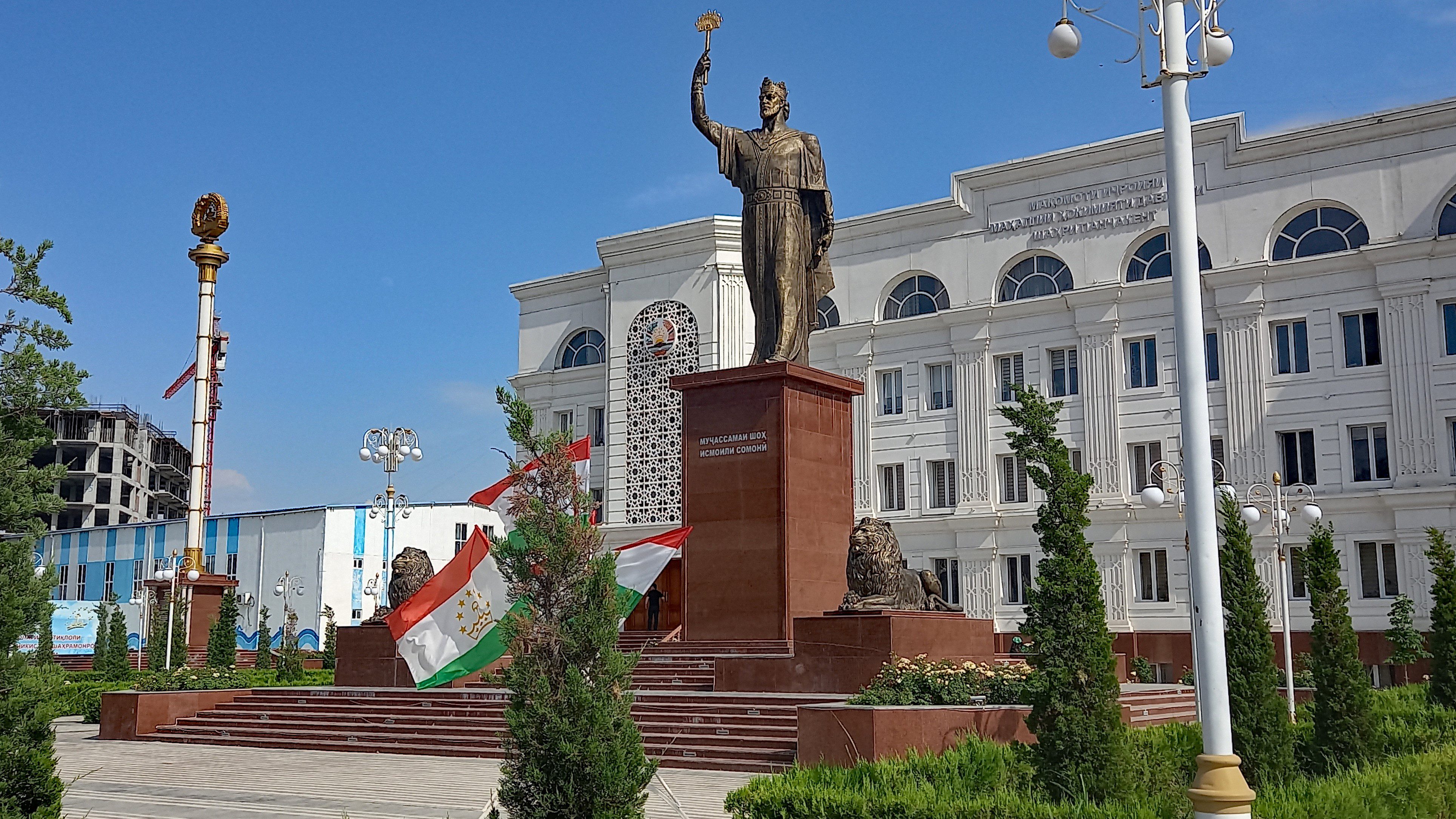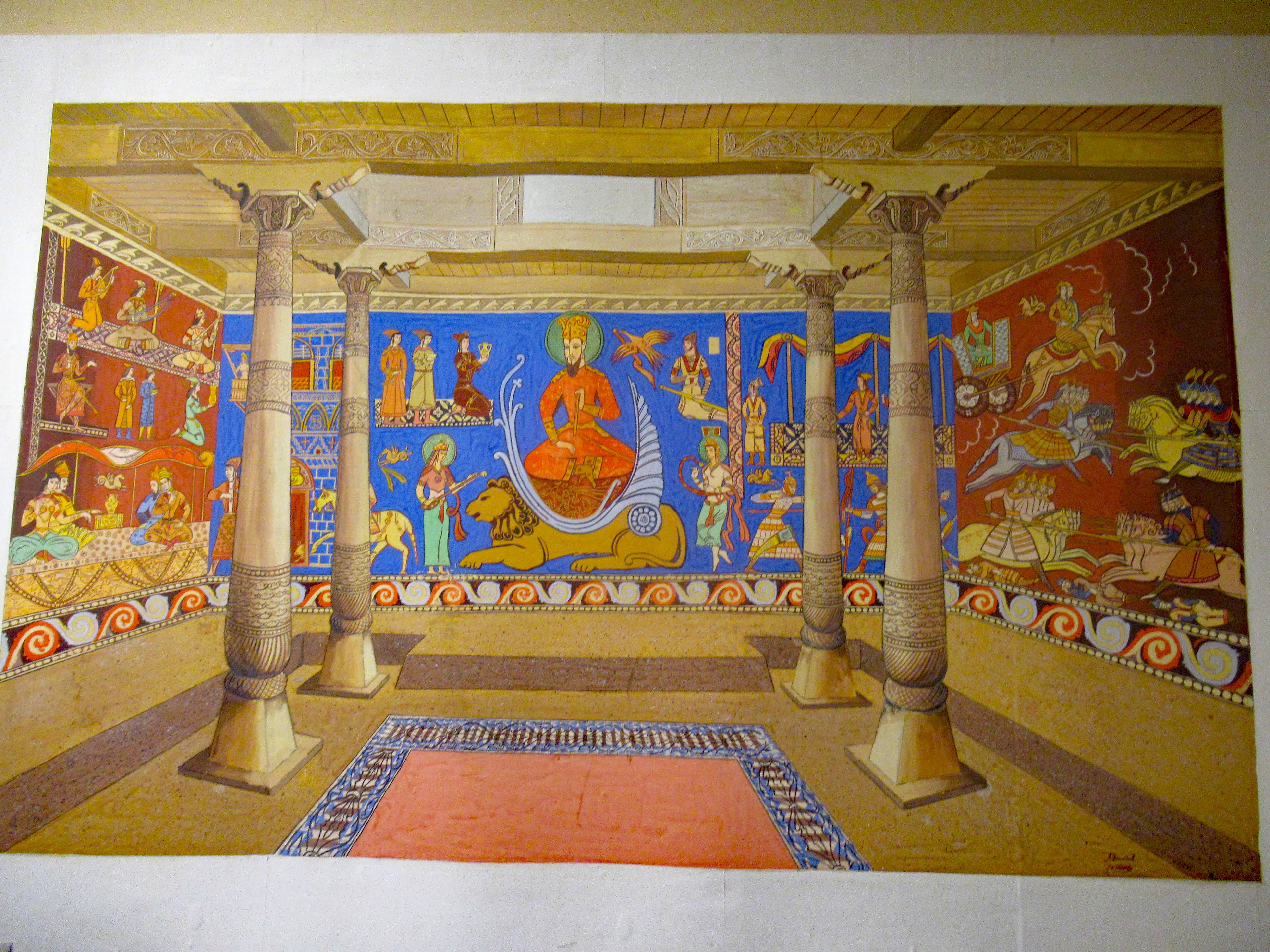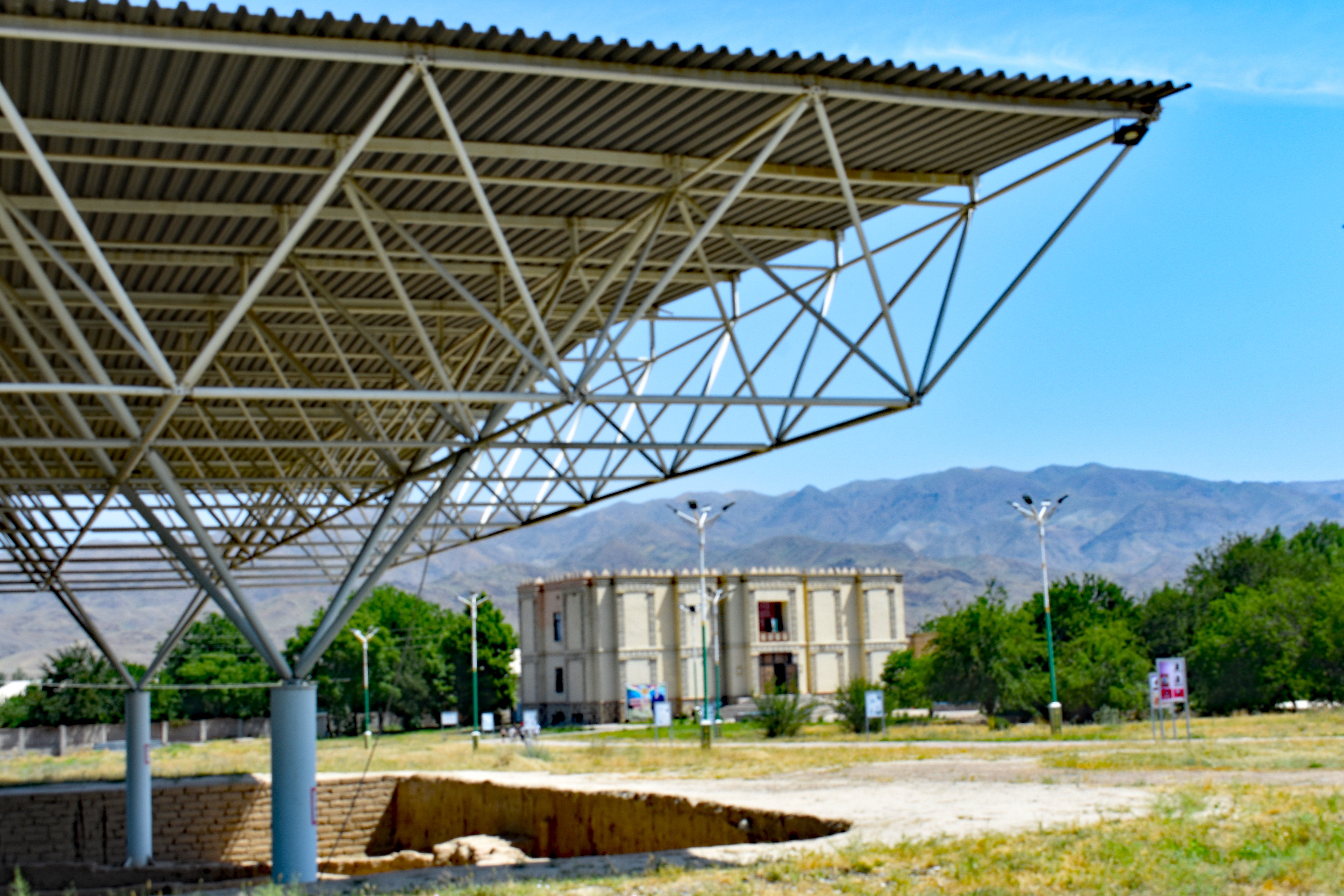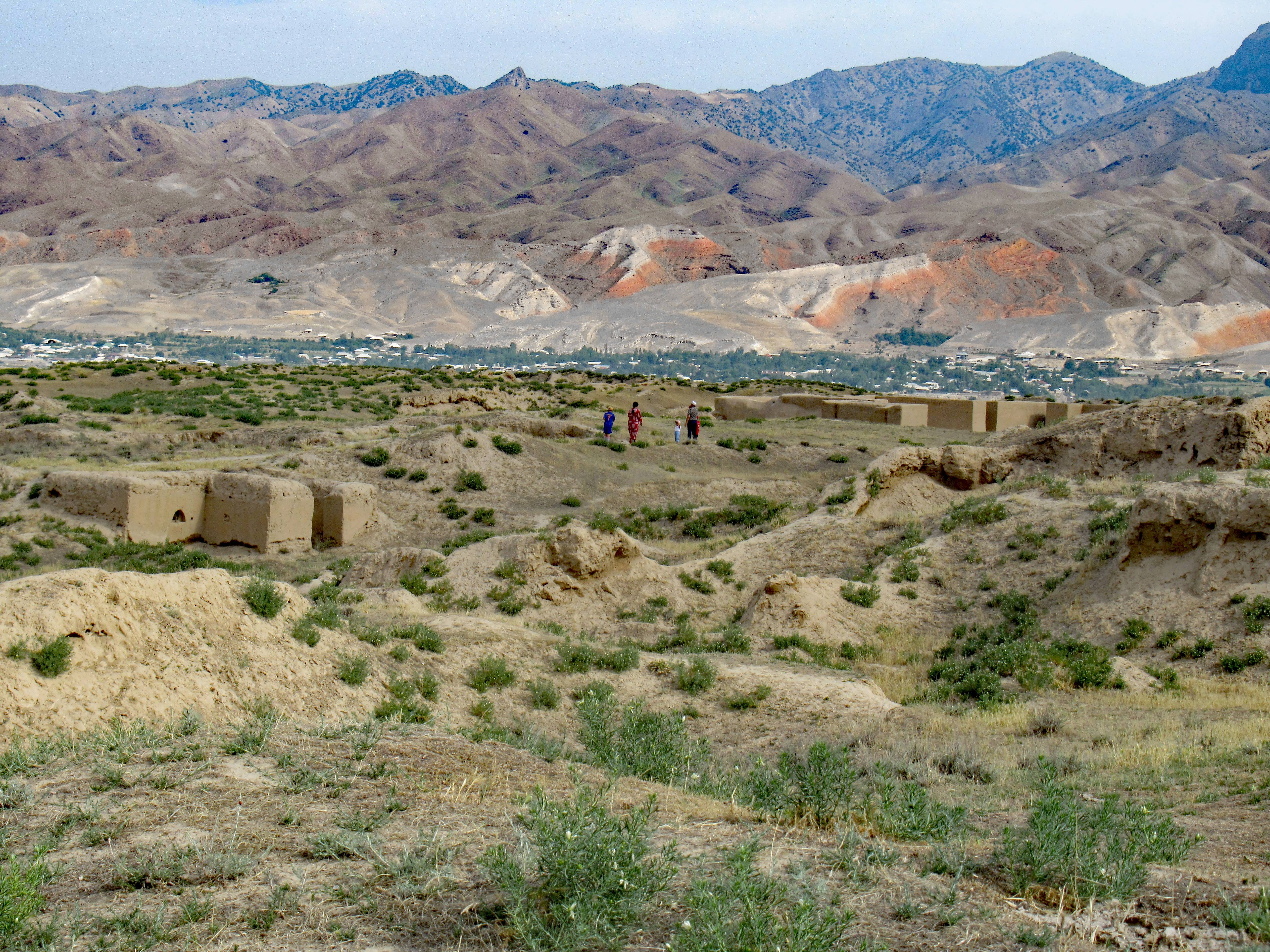We stayed in Penjikent for one night, but despite it being Tajikistan’s 5th largest city, sights were few. However, it made a good base for exploring the surrounding area.
Penjikent
The Central Market Bazaar, through a grand entrance, was quiet as our visit coincided with Eid-al-Adha celebrations, but this meant that a small park, with lots of stalls and children’s rides, had a holiday feel. Having stopped at a small café for a cold drink, three teenage girls giggled and asked me for a selfie, which made us think we were the only tourists in town.
A walk along the main street, Prospekt Rudaki, took us past a grand white government building with a statue of the country’s national hero, Ismoil Somoni, whose name is given to the currency. We continued past Central Stadium, where a football match was in progress, before reaching a statue of Loik Sherali, a modern-day Tajik poet (1941 – 2000), who was dressed in a suit and perched on what were said to be the symbolic leaves of a book. The final site was a golden statue of Lenin in his taxi hailing pose and that was the extent of our sight-seeing in Penjikent.
Rudaki Museum
The single-storey Rudaki Museum on the city’s outskirts had a sweeping path leading up to the white doric columns and decorated walls. Inside were various themed rooms: artefacts from the ruins of Sarazm and Ancient Penjikent (which we were visiting later), the Sogoid dynasty with ethnographical displays, Rudaki, (the father of Persian Poetry), the Soviet Period and subsequent gaining of independence in 1991, and Tajikistan’s flora and fauna. It was a pretty wide ranging, wide spanning range of subjects for such a small museum but we liked its simplicity.
Sarazm
The ancient ruins of Sarazm, 15 km from the city centre and 5km from the Uzbekistan border, was Tajikistan’s first UNESCO site. A long path through ornate gates, led to the grand cream coloured museum where we saw a photograph of the man who had discovered the site in 1970 on land where he was growing tobacco, but it was not excavated until 1976 when a Soviet archaeologist became involved.
As well as providing a great overview of Tajikistan generally, with its four districts and seven valleys, there were many other artefacts. Various rooms contained pottery remains and coins excavated, tools, and weigh stones used for measuring goods.
Sarazm would have had a population of between 2,000 and 4,000 and a model showed how it might have looked, with storerooms, a craftsman’s centre with kiln and burial area. The most well-known finding was from 3000 BC – a woman, known as the Princess of Sarazm, who was buried in rich clothing with jewellery made from lapis lazuli, jet and turquoise. The replica of the skeleton, buried in the foetal position, showed remarkably well preserved teeth. A bronze figure had been created to depict how she may have looked.
We then walked around seven vast excavation sites covered with huge, tall corrugated iron canopies for protection. Whilst there was a fair distance to walk, the crazy-paved paths were flat and even.
Ancient Penjikent
On a terrace above the banks of the River Zerafshan, and 1.5km out of the city, were the ruins of what was once dubbed the ‘Pompeii of Central Asia’. A map at the entrance outlined the site before we set off wandering sun-baked ridges, with what would have been the streets and houses below. A watch tower would have communicated with nearby watchtowers by lighting woods which gave off different coloured smoke – white to signify traders were approaching, blue for nobility, and black for the enemy.
The site is being excavated along with US funding and part of a Zoroastrian temple had been reconstructed whilst the former citadel had been excavated before being covered over, so all we could see was a hill. The site is on UNESCO’s tentative list, who would like more work done on the creation of buffer zones.
Regardless of your interest in archaeology, because of its location, there were excellent views of the surrounding river, mountains and modern day Penjikent.
One of the important discoveries has been the ‘Penjikent frescoes’, depicting hunting scenes, which would have adorned the walls and in the one room museum, we saw some of these (although the main ones are in museums in other parts of Tajikistan and Russia. There was also pottery, coins, clay pipes, and a kind of environmentally friendly clay nappy. A map depicted the two routes on the Silk Road, a more northerly route through towns like Samarkand, where there was a greater chance of being robbed, or the southerly more mountainous and harder route, which would have been safer when it was passable in the spring and summer.
Despite the museum attempting to bring the ruins to life, it was hard to imagine that from the 5th to 8th centuries this had been one of the most cosmopolitan cities on the Silk Road.












